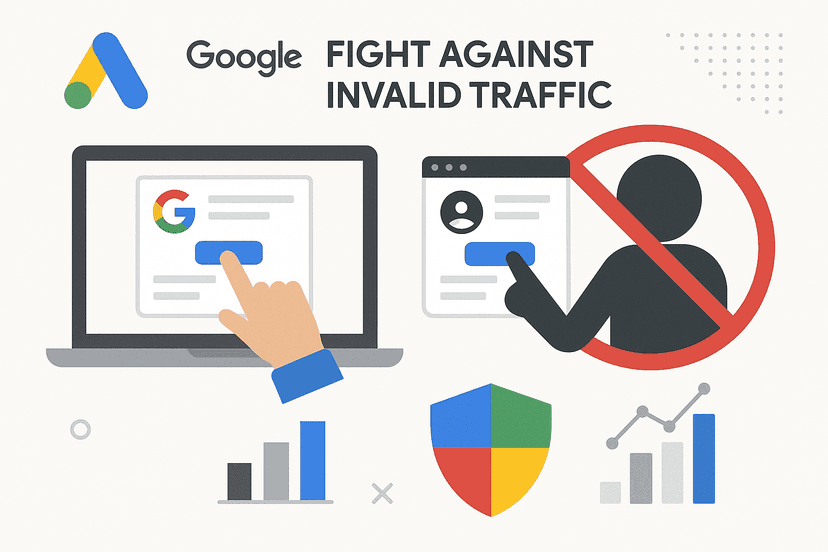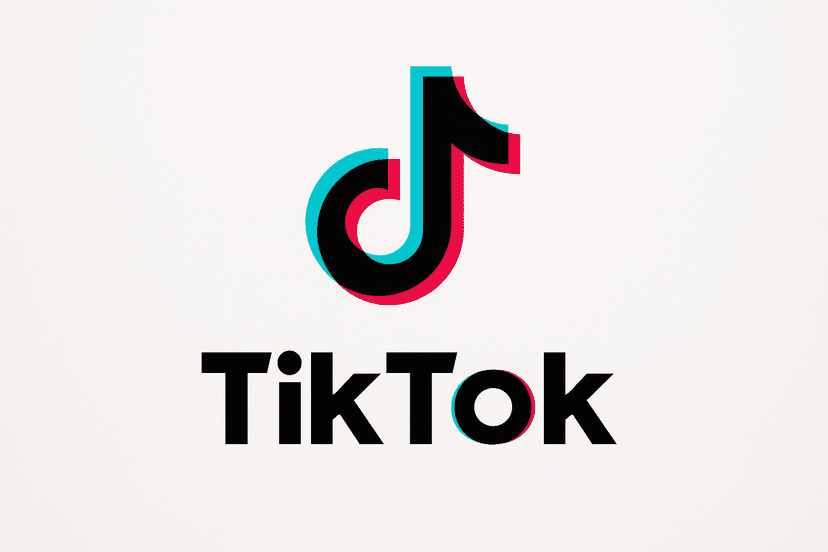In the ever-evolving landscape of digital advertising, Google continues to push boundaries with innovative AI-powered solutions. The recent announcement of Google Ads AI Max for Search campaigns represents a significant leap forward, offering advertisers powerful new tools to maximize campaign performance and reach. This comprehensive guide will explore everything you need to know about AI Max – from its core features and benefits to implementation strategies and optimization techniques.
What is Google Ads AI Max?
Google Ads AI Max is a new feature suite designed to enhance Search campaigns through advanced AI technology. Unlike Performance Max or traditional Search campaigns, AI Max isn’t a new campaign type but rather an opt-in feature set that can be enabled on existing Search campaigns to unlock additional capabilities.
AI Max brings together a collection of targeting and creative enhancements powered by Google’s advanced artificial intelligence. The system leverages machine learning to expand your reach, optimize creative assets, and provide deeper insights into campaign performance – all while maintaining advertiser control.
According to Google’s initial data, advertisers who activate AI Max in their Search campaigns typically see 14% more conversions or conversion value at a similar CPA/ROAS. For campaigns primarily using exact and phrase keywords, the potential uplift is even more substantial, reaching up to 27% improvement.
Core Features of Google Ads AI Max
Google Ads AI Max offers three primary feature sets, each addressing a specific aspect of Search campaign optimization:
1. Search Term Matching
The search term matching feature allows advertisers to expand beyond their existing keywords using a combination of broad match and keywordless technology. This helps campaigns discover and target new, relevant search queries that might have been missed with traditional keyword strategies.
How it works:
This approach helps advertisers capture more conversion opportunities by appearing in searches they might have overlooked in traditional keyword planning. For instance, if you’re targeting “red midi dress” with exact match keywords, AI Max might help you appear for related queries like “colorful midi dresses for spring and summer” that traditional targeting might miss.
2. Asset Optimization
Asset optimization within AI Max focuses on delivering the most relevant ad creative across different search intents and surfaces. This includes:
Text Customization: Previously known as “automatically created assets,” this feature helps generate new headlines and descriptions based on your landing page content, existing ads, and keywords. Google has improved this system to create assets with clearer calls-to-action and stronger unique selling propositions.
Final URL Expansion: This capability ensures users are directed to the most relevant page on your website based on their search intent, improving landing page relevance and potential conversion rates.
Together, these asset optimization features help ensure your ads remain relevant and compelling, even as the system expands to target new search queries. This dynamic adaptation is critical for maintaining performance while reaching beyond your core keyword list.
3. Enhanced Controls and Reporting
AI Max introduces several new control mechanisms and reporting improvements to help advertisers maintain precision while leveraging AI capabilities:
Locations of Interest: Exclusive to AI Max campaigns, this feature allows targeting based on geographical intent at the ad group level. This is particularly useful for businesses serving multiple locations or targeting customers interested in specific geographical areas.
Brand Controls: Available at both campaign and ad group levels, brand controls allow advertisers to specify which brands they want their ads associated with or excluded from.
URL Parameter: A new URL parameter provides greater visibility into search terms across all match types, enabling real-time landing page optimization and detailed tracking.
Improved Reporting: Google is rolling out reporting enhancements including headlines and URLs in search terms reports, giving advertisers clearer insights into customer journeys. Asset reports will also show how assets perform against KPIs like spend and conversions, not just impressions.
These controls and insights help maintain advertiser oversight while leveraging AI capabilities, addressing common concerns about automation and transparency in AI-driven advertising.
Benefits of Using Google Ads AI Max
Implementing AI Max for your Search campaigns can deliver several significant advantages:
Expanded Reach and Audience Discovery
AI Max helps you discover and target new, relevant search queries that your current keyword strategy might miss. This expanded reach can help you:
- Identify untapped market segments
- Capture emerging search trends
- Reach potential customers earlier in their buying journey
- Discover new use cases for your products or services
Many advertisers find that the additional search queries targeted through AI Max represent high-quality traffic that converts at rates comparable to or better than their core keywords.
Improved Ad Relevance and Personalization
The asset optimization features in AI Max help ensure your ads remain relevant, even as they appear for a wider range of search queries. Benefits include:
- Dynamic generation of headlines and descriptions that better match user intent
- More compelling calls-to-action tailored to specific searches
- Improved landing page relevance through URL expansion
- Personalized ad experiences that can improve click-through and conversion rates
This enhanced relevance helps maintain quality scores and conversion rates even as your targeting expands, avoiding the performance degradation sometimes associated with broader targeting.
Greater Efficiency and Performance
Early adopters of AI Max have reported significant performance improvements:
- Up to 27% more conversions for campaigns primarily using exact and phrase match keywords
- Better conversion rates at similar or improved cost-per-acquisition
- Reduced manual optimization requirements
- Faster discovery of new performing keywords and audiences
L’Oréal, for example, reported a 2X higher conversion rate at a 31% lower cost-per-conversion after implementing AI Max, particularly by capturing new queries like “what is the best cream for facial dark spots?”
Enhanced Control with Transparency
Unlike some AI-driven advertising solutions that operate as “black boxes,” AI Max provides:
- Granular controls at campaign and ad group levels
- Detailed reporting on new search terms and performance
- The ability to exclude specific terms, brands, or locations
- Visibility into which assets are performing well
These transparency features help advertisers maintain confidence in their campaigns while leveraging AI capabilities.
How to Implement Google Ads AI Max
Setting up AI Max for your Search campaigns involves several key steps:
Eligibility and Access
AI Max is rolling out globally in beta starting in late May 2025. To get started:
- Check your Google Ads account for the AI Max option within your Search campaigns
- If you don’t see it yet, contact your Google representative to request beta access
- Review the eligibility requirements for your campaigns
Remember that AI Max is an opt-in feature set – it’s not a new campaign type or a forced migration. You can activate it for select campaigns while keeping others on standard settings.
Enabling AI Max on Search Campaigns
To activate AI Max on an eligible Search campaign:
- Navigate to your Search campaign settings
- Look for the “AI Max” section in the campaign settings
- Toggle the AI Max feature suite to “On”
- Review the individual features that will be enabled
- Save your campaign settings
Enabling AI Max activates all three feature sets (search term matching, asset optimization, and enhanced controls) by default, but you can opt out of specific features as needed.
Configuring Optional Controls
After enabling AI Max, you may want to configure additional controls:
- Text Customization and URL Expansion: These can be toggled on/off at the campaign level
- Search Term Matching: Can be disabled at the ad group level if needed
- Locations of Interest: Configure at the ad group level to target users based on geographical intent
- Brand Controls: Set brand inclusions or exclusions at campaign or ad group levels
Remember that your existing negative keywords will continue to function with AI Max enabled, providing another layer of control over where your ads appear.
Optimization Strategies for AI Max Campaigns
To get the most from AI Max, consider these optimization strategies:
Strategic Campaign Structure
Your campaign structure remains important even with AI Max enabled:
- Thematic Ad Groups: Create logically organized ad groups around product categories, themes, or user intents
- Smart Asset Variety: Provide diverse headlines and descriptions to give the system more options
- Landing Page Alignment: Ensure landing pages contain relevant, high-quality content related to your target themes
- Budget Allocation: Consider allocating more budget to AI Max-enabled campaigns during the learning phase
A well-structured campaign gives AI Max better inputs to work with, potentially improving performance.
Monitoring and Refinement
Regular monitoring is essential when using AI Max:
- Search Term Analysis: Review new search terms regularly to identify patterns and opportunities
- Asset Performance: Track which automatically generated assets perform best
- Negative Keywords: Continue adding negative keywords for irrelevant traffic
- Conversion Tracking: Ensure conversion tracking is properly set up to help the system optimize
The key is finding the right balance between giving the AI system room to explore and maintaining control over campaign direction.
Testing and Comparison
Consider these testing approaches to evaluate AI Max performance:
- Campaign Experiments: Use Google’s Campaign Experiments feature to split traffic between AI Max and standard settings
- Phased Rollout: Start with a subset of campaigns before wider implementation
- Before/After Analysis: Compare key metrics before and after enabling AI Max
- Feature Isolation: Test different combinations of AI Max features to determine which provide the most value
Google notes that drafts and experiments are available for AI Max, with more customized A/B testing capabilities on the roadmap.
Real-World Success Stories with Google Ads AI Max
Several advertisers have already seen impressive results from early AI Max adoption:
L’Oréal: Beauty Industry Leader
The global beauty brand implemented AI Max to find new search opportunities and improve ad relevance:
- Results: 2X higher conversion rate at a 31% lower cost-per-conversion
- Key Success Factor: Unlocking conversions from net-new search queries like “what is the best cream for facial dark spots?”
- Strategy: Using search term matching to identify and capture searches they hadn’t previously targeted
L’Oréal’s experience demonstrates how AI Max can help established brands discover new customer acquisition opportunities.
MyConnect: Utility Connection Service
This Australia-based utility connection service was already using AI-powered features like target ROAS bidding and broad match but saw additional benefits from AI Max:
- Results: 16% more leads at a 13% lower cost-per-action
- Key Finding: 30% increase in conversions specifically from net-new queries
- Impact: Based on these results, they expanded AI Max to more Search campaigns
MyConnect’s case shows that even advertisers already using Google’s AI features can find incremental value in AI Max.
Comparing AI Max to Other Google Ads Features
To understand AI Max’s place in Google’s product ecosystem, it helps to compare it with other offerings:
AI Max vs. Performance Max
While both leverage AI technology, they serve different purposes:
- AI Max: Enhances traditional Search campaigns with expanded targeting and creative optimization
- Performance Max: A standalone campaign type that targets users across Google’s properties (Search, Display, YouTube, etc.)
- Campaign Control: AI Max offers more granular controls specifically designed for Search advertising
- Keyword Usage: AI Max builds upon your existing keywords, while Performance Max is primarily keywordless
Both can be used in complementary ways, with AI Max focusing on Search-specific optimization while Performance Max covers broader discovery.
AI Max vs. Traditional Broad Match
AI Max incorporates broad match technology but expands upon it:
- Targeting Approach: Both use signals beyond exact keyword matching, but AI Max adds keywordless targeting based on landing page content
- Creative Adaptation: AI Max includes asset optimization that traditional broad match doesn’t offer
- Controls: AI Max provides additional controls like locations of interest and brand controls
- Performance Expectations: AI Max typically delivers better performance than broad match alone due to its comprehensive approach
Think of AI Max as an evolution of broad match that adds additional capabilities and controls.
AI Max vs. Smart Bidding
Smart bidding strategies like Target CPA and Target ROAS can be used alongside AI Max:
- Focus Areas: Smart bidding optimizes bids, while AI Max enhances targeting and creative
- Compatibility: AI Max works with existing Smart Bidding strategies
- Combined Benefits: Using both can optimize both who sees your ads and how much you bid for each auction
- Data Requirements: Both leverage Google’s AI but may require sufficient conversion data to perform optimally
For best results, combining AI Max with appropriate Smart Bidding strategies is recommended.
Addressing Common Concerns About AI Max
Advertisers often have questions or concerns when adopting new AI-powered features:
Loss of Control
Some advertisers worry about giving up control to AI systems:
- Reality Check: AI Max actually adds new controls, including locations of interest and brand controls
- Opt-Out Options: You can disable specific features like text customization at the campaign level
- Negative Keywords: Continue to function as expected
- Asset Control: You can remove any automatically generated assets you don’t want
AI Max is designed to provide AI benefits while maintaining advertiser oversight.
Data Privacy and Usage
Questions about how data is used are common:
- Training Inputs: AI Max uses your campaign assets, keywords, and landing pages to learn
- Privacy Compliance: Operates within Google’s existing privacy framework
- Data Sharing: Your campaign data isn’t shared with competitors
- First-Party Data: Can leverage your first-party data through Customer Match and other integrations
Google’s implementation follows standard data practices consistent with their other advertising products.
Performance Expectations
Setting realistic expectations is important:
- Learning Period: Like most AI systems, AI Max may need time to optimize
- Variable Results: Performance improvements will vary by industry, account history, and campaign structure
- Ongoing Optimization: Still requires monitoring and refinement
- Best Practices: Following Google’s recommendations can help maximize results
While the average improvement is 14% more conversions, individual results will vary based on numerous factors.
Future of Search Advertising with AI Max
Google Ads AI Max represents a significant step in the evolution of search advertising, but it’s just one part of a broader transformation:
Integration with AI Overviews
Google’s AI-powered search experiences, including AI Overviews, are creating new advertising opportunities:
- Ads from Search using broad match (with or without AI Max), Performance Max, and Standard Shopping campaigns are eligible to show within AI Overviews
- New Formats may develop specifically for these AI-enhanced search experiences
- Visual Search integration through Google Lens creates additional touchpoints
As search becomes more exploratory and multimodal, AI Max helps position advertisers to capture these emerging opportunities.
Evolving Capabilities
Google has indicated that AI Max will continue to develop:
- Additional Controls: More customized A/B testing capabilities are on the roadmap
- Reporting Enhancements: Further improvements to transparency and insights
- Creative Capabilities: Likely expansion of asset generation and optimization features
- Integration: Deeper connections with other Google Ads products and features
Staying current with AI Max updates will be important for advertisers looking to maintain competitive advantage.
Shifts in Keyword Strategy
AI Max may accelerate the evolution of keyword strategy in search advertising:
- From Exhaustive Lists to thematic keyword groups supplemented by AI targeting
- From Manual Expansion to AI-assisted discovery of new search opportunities
- From Rigid Match Types to fluid targeting that adapts to changing search behaviors
- From Traffic Focus to conversion-oriented targeting across the funnel
This evolution doesn’t eliminate the need for keywords but changes how they’re used strategically.
Best Practices for Google Ads AI Max Success
To maximize your success with AI Max, follow these best practices:
Campaign Preparation
Before enabling AI Max:
- Audit Existing Campaigns: Review performance and structure to identify good candidates
- Check Conversion Tracking: Ensure your conversion tracking is accurate and comprehensive
- Review Landing Pages: Make sure landing pages contain relevant, high-quality content
- Set Clear KPIs: Define what success looks like for your AI Max tests
Proper preparation helps create the conditions for AI Max to succeed.
Implementation Approach
When implementing AI Max:
- Start Selectively: Begin with a few well-performing campaigns rather than account-wide implementation
- Allow Learning Time: Give campaigns at least 2-4 weeks to adapt and optimize
- Maintain Budget Flexibility: Consider allocating additional budget during the learning phase
- Use Campaign Experiments: Split traffic to compare performance against standard settings
A methodical approach helps you evaluate performance while managing risk.
Ongoing Management
For long-term success with AI Max:
- Regular Reviews: Schedule weekly or bi-weekly reviews of new search terms and performance
- Iterative Refinement: Continue adding negative keywords and adjusting controls
- Creative Refreshes: Periodically update your core assets to give the system fresh inputs
- Cross-Campaign Learning: Apply insights from successful AI Max campaigns to others
AI Max requires ongoing management, not just set-and-forget.
Conclusion
Google Ads AI Max represents a significant evolution in search advertising, bridging the gap between traditional keyword-based campaigns and fully automated approaches. By combining expanded targeting capabilities with enhanced creative optimization and granular controls, AI Max offers advertisers a powerful way to improve performance while maintaining oversight.
The initial results from early adopters are promising, with substantial improvements in conversion rates and efficiency. As Google continues to transform search into a more exploratory, multimodal experience, AI Max positions advertisers to capture these emerging opportunities while building on their existing search strategy.
Whether you’re looking to expand your reach, improve ad relevance, or simply boost campaign performance, AI Max offers valuable capabilities worth exploring. As with any advanced advertising tool, success depends on thoughtful implementation, regular monitoring, and continuous optimization – but for advertisers willing to embrace this new approach, the potential rewards are substantial.
As AI Max rolls out globally, now is the time to familiarize yourself with its capabilities and develop a strategy for testing and implementation. The future of search advertising is increasingly intelligent, adaptive, and personalized – and with AI Max, that future is already here. For more information on maximizing your Google Ads strategy, check out our resources on Relevant Search Google Ads and Google Shopping.






